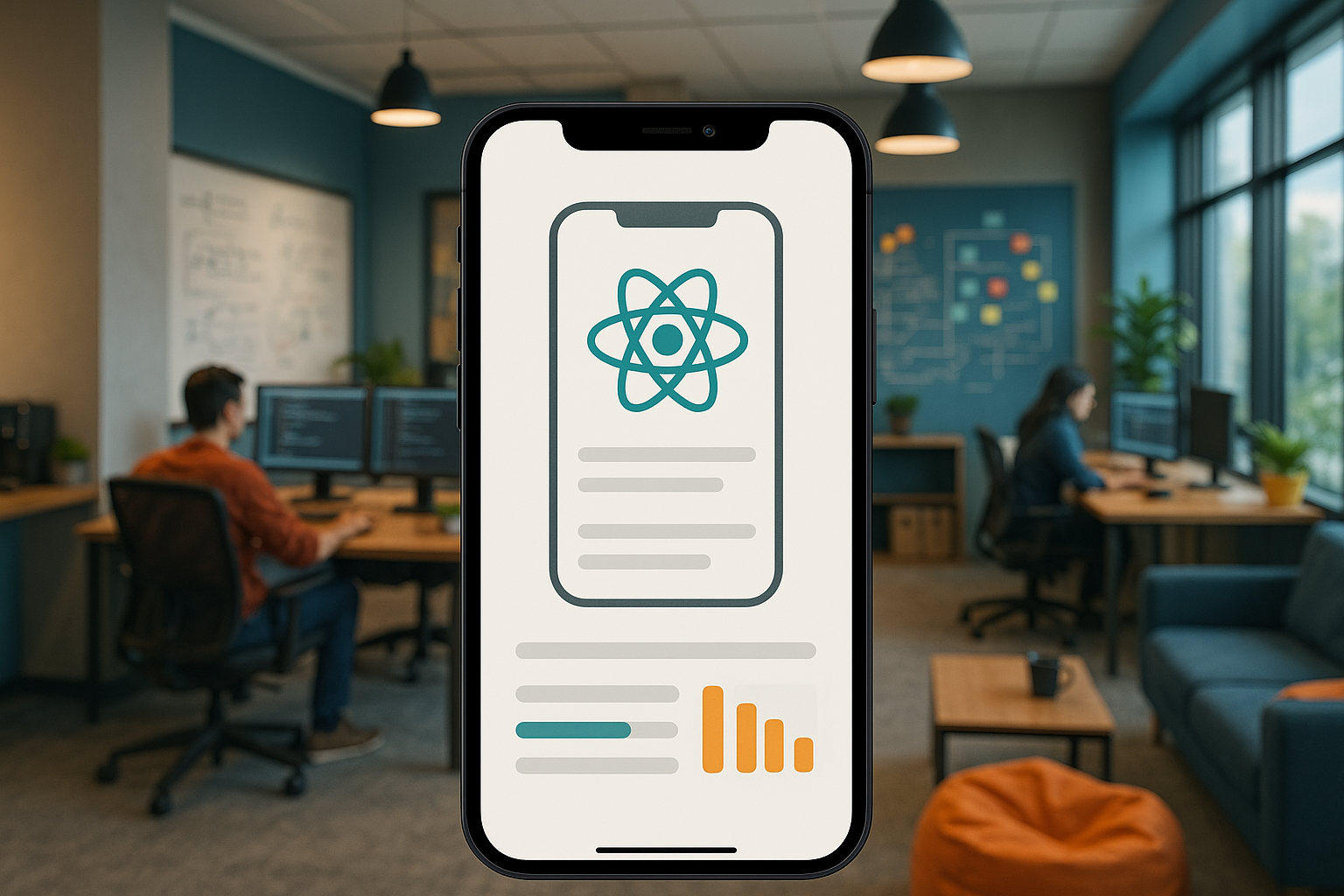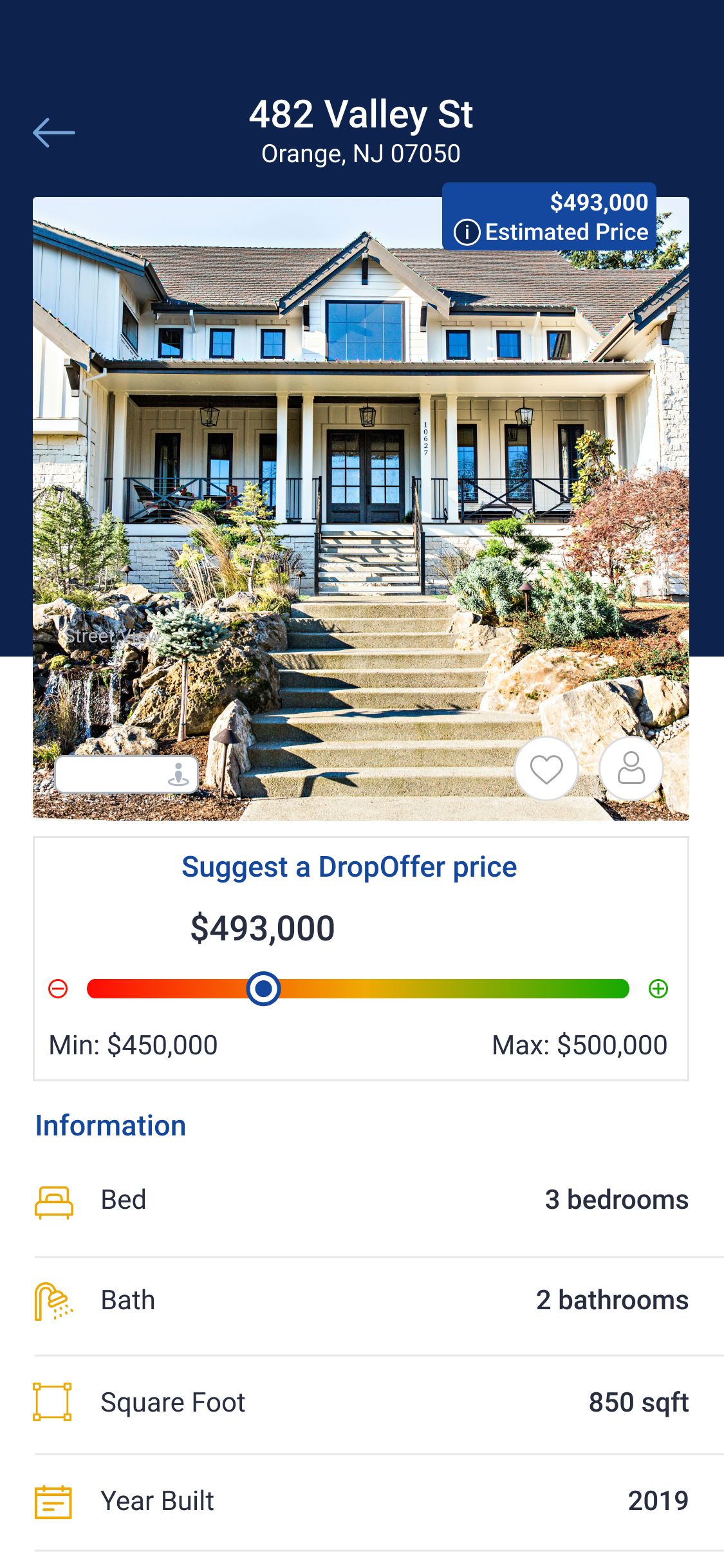Introduction
In the pursuit of digital relevance, businesses face a critical decision: how to build a mobile presence that captures both Android and iOS users without doubling development costs and timelines. React Native emerges as a compelling solution, promising a single codebase to rule both platforms. However, the path from concept to a high-performing, custom React Native application is fraught with complexities that can stall even the most ambitious projects. The framework’s subtleties, from performance tuning to nuanced UI implementation, demand a level of expertise that extends beyond basic JavaScript or even siloed mobile development knowledge.
This article serves as a comprehensive guide to navigating the landscape of custom React Native app development. We will demystify the technology, explore the significant challenges that make in-house development a formidable task, and break down the associated costs. Furthermore, we will introduce leading development companies that can transform your vision into reality.
As a top US AI-powered app development firm with over two decades of experience and more than 100 apps launched, we at MetaCTO understand these challenges intimately. We specialize in building sophisticated, scalable mobile applications. Throughout this guide, we will share insights gleaned from our extensive experience to help you understand why partnering with a seasoned agency is often the most strategic path to success.
What is a React Native app?
React Native is a powerful, open-source framework created by Meta that brings the best parts of developing with React—a best-in-class JavaScript library for building user interfaces—to the world of native mobile development. At its core, React Native allows developers to build truly native applications for Android, iOS, and even other platforms like Windows and macOS, all from a single codebase written in JavaScript.
A common misconception is that React Native apps are simply web pages packaged inside a native container. This is not the case. Instead of rendering web components, React Native is rendered with native code. It provides a core set of platform-agnostic native components, such as View, Text, and Image, which map directly to the platform’s native UI building blocks. This means a React Native app uses the same fundamental UI elements and the same native platform APIs that other apps do. The result is an application that feels and performs like a native app, delivering a high-quality user experience without compromise.
The framework effectively brings the declarative and component-based programming paradigm of React to mobile platforms. This allows for a more predictable and maintainable codebase. While React Native provides the essential building blocks for UI, it remains unopinionated about other aspects of development. It does not prescribe how to handle routing or how to access the numerous platform-specific APIs. This flexibility is a key strength, as it allows developers to integrate any library, SDK, or even write their own native code to extend the app’s functionality. This capability to generate native changes and seamlessly blend JavaScript with platform-native code ensures that developers are never limited by the framework itself.
Reasons that it is difficult to develop a React Native app in house
While React Native offers significant advantages in efficiency and code sharing, developing a polished, high-performance custom application in-house presents a unique set of challenges. These difficulties stem from the framework’s architecture, its reliance on native components, and the specific skill sets required to master it.
Bespoke UI Development and Performance Tuning
Creating a unique and compelling user interface is paramount for any successful app. However, bespoke UI development in React Native can be more time-consuming and require more experience compared to native development. React Native offers fewer off-the-shelf UI components, compelling developers to build custom elements. This process requires a deep understanding of the framework to ensure the UI is not only visually appealing but also performant across different devices and screen sizes.
Performance is another critical area where in-house teams often struggle. For instance, React Native lists can exhibit performance issues that, while manageable for seasoned developers, can become significant bottlenecks for novices. These problems can manifest as slow scrolling, high memory usage, or delayed rendering, all of which degrade the user experience.
The Developer Skill Gap
Simply having a team of web or mobile developers is often not enough to succeed with React Native. The framework demands a hybrid skill set that bridges the gap between web and native mobile development.
- Web Developers vs. Mobile UX: Not all React web developers possess a deep understanding of the subtleties of mobile user experience (UX), platform-specific UI patterns, or how an application should intuitively function on a handheld device.
- Mobile Developers vs. Web Concepts: Conversely, a traditional smartphone developer might not fully grasp the web-centric concepts and architecture that underpin React Native.
- The Need for Platform-Specific Experience: A basic JavaScript developer without hands-on, platform-specific experience is simply inadequate. True proficiency requires understanding how React Native interacts with the underlying native layers of both Android and iOS.
Native Dependencies and Compatibility Issues
React Native’s power comes from its extensive use of native components. However, this tight integration is also a source of complexity. Things may not function as they should simply because of an issue in the underlying native module. This can make debugging difficult, as problems may originate in Objective-C/Swift for iOS or Java/Kotlin for Android, not just in the JavaScript code.
Furthermore, the mobile ecosystem is in constant flux. A simple operating system update can introduce unexpected problems. For example, a past Android upgrade caused specific performance issues in certain React Native applications. Vendor updates, whether from Google, Apple, or third-party library creators, can impact app functionality. Keeping the app, the React Native framework, and its myriad dependencies current is a constant challenge due to the rapid pace of updates and occasional disruptive changes. Compatibility issues can arise when React Native itself is updated, requiring careful management of the entire dependency tree.
The Limits of Code Sharing
One of the most touted benefits of React Native is code reuse, but the reality is more nuanced, especially when sharing code between web and mobile platforms.
- DOM vs. Native Elements: React.js for the web depends on DOM components, whereas React Native uses native UI elements. This fundamental difference means there is little direct code sharing for UI components across web and mobile.
- Reusable Components: The only things that can typically be reused are non-DOM libraries and source code, such as business logic, state management, and API calls.
- Efficiency Considerations: In many cases, attempting to modify existing web-focused code for reuse on mobile is less efficient than creating new, mobile-optimized logic from scratch.
Navigating these challenges requires a dedicated team with deep, cross-disciplinary expertise. This is why partnering with a specialized mobile app development agency like MetaCTO, which has a team of experienced full-stack developers, can de-risk the project and accelerate the path to a successful launch.
Why custom app development for React Native
Opting for custom React Native app development over generic, template-based solutions is a strategic decision that empowers businesses to build applications tailored precisely to their brand identity, user needs, and business goals. While the challenges of custom development are real, the rewards are substantial, offering a level of control, scalability, and competitive differentiation that off-the-shelf solutions simply cannot match.
A primary driver for custom development is the creation of a bespoke user interface and experience (UI/UX). A unique and intuitive design is crucial for brand recognition and user engagement. While React Native’s bespoke UI development can be complex, a skilled development partner can overcome these hurdles to craft an interface that is not only visually stunning but also highly performant and perfectly aligned with your brand. This level of customization ensures that your app stands out in a crowded marketplace.
Furthermore, custom development is essential for implementing complex and proprietary features. Your app’s core value proposition may depend on functionalities that are not available in any pre-built package. This includes:
- Advanced Third-Party Integrations: Integrating with specialized APIs, payment gateways, or proprietary enterprise software is often more complex in React Native than in native development. A custom approach ensures these integrations are seamless, secure, and reliable.
- Sophisticated Functionality: Features like real-time geolocation, IoT integration, or robust in-app purchasing systems demand custom logic. For instance, achieving IoT integration in React Native presents a significant development challenge that necessitates a custom-built solution to manage hardware communication and data processing effectively.
- Enterprise System Connectivity: Integrating with legacy enterprise systems is a common requirement for business applications. This typically falls under a medium-to-high complexity scale and requires a custom development approach to ensure data synchronization and security.
Custom development also provides the foundation for performance optimization and scalability. Experienced developers can address the inherent performance quirks of React Native, such as optimizing list rendering and managing memory usage, ensuring the app remains fast and responsive as the user base grows. They can structure the codebase to be maintainable and scalable, addressing the challenges of rapid framework updates and dependency management head-on. This foresight prevents technical debt and ensures the application can evolve with your business.
Finally, a custom approach allows for a more effective maintenance and growth strategy. Because the code is built from the ground up for your specific needs, updates, bug fixes, and the addition of new features become more streamlined. This control is vital for adapting to market changes and user feedback, ensuring the long-term success and relevance of your application.
Cost estimate for developing a React Native app
The cost of developing a custom React Native app can vary widely, typically ranging from $15,000 to $300,000. This broad spectrum is influenced by several key factors, including the app’s complexity, its feature set, the hourly rate of the developers, the size of the development team, and the app’s distribution platforms. Understanding these variables is crucial for accurately budgeting your project.
Cost Breakdown by App Complexity
The primary driver of cost is the application’s overall complexity. We can categorize apps into three general tiers:
- Simple React Native Apps ($15,000 - $35,000): These are applications with basic functionality, a limited number of screens, and no complex backend integrations. Think of a standalone utility like a timer or a simple calculator.
- Medium-Complex React Native Apps ($35,000 - $80,000): These apps typically include features like user login, API integrations, and more sophisticated UI elements. They might connect to a backend and handle more dynamic data.
- Complex React Native Apps ($80,000 - $300,000): These are feature-rich applications that may include real-time data synchronization, e-commerce functionality, extensive third-party integrations, custom animations, and complex backend architecture. On-demand services and social networking apps often fall into this category.
Cost Influenced by Specific Features
The inclusion of specific features directly impacts the final price tag. Each feature requires dedicated development time for implementation, integration, and testing. Here is a table outlining estimated costs for common app features:
| Feature | Estimated Cost Range |
|---|---|
| Login Interface / User Authorization | $2,000 - $4,000 |
| Admin Panel | $4,000 - $6,000 |
| API Integrations | $5,000 - $5,500 |
| Notification Panel | $5,000 - $7,500 |
| Streaming Portal | $5,000 - $10,000 |
| E-Commerce Functionality | $10,000 - $15,000 |
| Geolocation | $15,000 - $20,000 |
| IoT Integration | $25,000 - $30,000 |
Other features also affect the cost. The more feature-rich an admin panel is, the more complex and costly the app becomes. Similarly, integrating multiple in-app purchase options adds complexity. Connecting with legacy enterprise systems or adding customer-centric social media add-ons will also increase the overall development budget.
Ongoing Costs: Maintenance
The expenses do not end at launch. Regular maintenance is essential to ensure the app remains functional, secure, and up-to-date. The annual app maintenance cost for a React Native app is typically estimated at 20% of the total initial development cost. This budget covers necessary app updates, design changes, and bug fixes that arise from new OS versions or changing user needs.
How React Native Reduces Overall Costs
Despite these figures, React Native is generally more cost-effective than building two separate native apps. The cost savings come from several key advantages:
- Shared Codebase: Developers can share up to 90% of the code between the Android and iOS versions. This shared codebase means the development time and cost are roughly divided in half.
- Single Development Team: Instead of hiring two distinct teams for Android and iOS, you only need one team of React Native developers, reducing workforce costs.
- Faster Development: The framework’s open-source nature provides a wealth of ready-made solutions and libraries that simplify and speed up the development process, leading to a faster time-to-market.
- Easier Maintenance: Dealing with a single codebase simplifies the process of rolling out updates and fixing bugs across both platforms.
Choosing the right development partner is also a significant cost factor. While hiring freelancers may seem like the most cost-effective option, it often comes with risks in quality and reliability. Partnering with a high-cap agency can be prohibitively expensive. A mid-cap company, such as MetaCTO, often represents the ideal balance, providing expert-level service and reliability at a competitive price point.
Top React Native app development companies
Selecting the right development partner is arguably the most critical decision you will make in your app development journey. An expert team can navigate the complexities of React Native, mitigate risks, and deliver a high-quality product on time and within budget. Here are some of the top companies specializing in React Native development.
1. MetaCTO
As a premier US-based mobile and AI development firm, we at MetaCTO bring over 20 years of experience and a track record of launching over 100 successful applications. Our team of full-stack developers possesses the deep, cross-platform expertise required to overcome the most difficult challenges in custom React Native development, from intricate UI design to complex backend integrations and performance optimization.
What sets us apart is our holistic approach to app creation. We don’t just build apps; we build businesses. Our services extend beyond development to include product strategy, AI integration, app growth, and monetization. We understand that a successful app is one that acquires users, retains them, and generates revenue. Our proven monetization strategies have helped clients join the profitable 5% of apps that break the $500/month barrier.
For entrepreneurs and businesses looking to move quickly, our 90-day MVP service is designed to take an idea from concept to a market-ready application in just three months. We combine strategic consulting, meticulous design, and agile development to launch a functional product that solves a real user problem and sets the stage for future growth. Brands like Carlyle, Liverpool F.C., and Slipknot trust us to deliver results, and our 5.0-star rating on Clutch reflects our commitment to excellence and client success.
2. Zco Corporation
Based in New Hampshire with satellite offices in Boston and New York, Zco Corporation is an established app development company that relies on a team of full-stack developers experienced in React Native. They have carved out a niche in specialized areas, with a portfolio that highlights their expertise in building virtual reality (VR) apps and mobile game apps. For businesses looking to innovate in these specific domains, Zco offers a compelling option. The average cost to build an app with them is around $30,000, with a typical project timeline of up to nine months.
3. The NineHertz
The NineHertz is a global mobile app development agency with a physical presence in the United States and offices spanning Australia, India, Canada, and the UK, among others. They work with React Native as part of a broader suite of dozens of different development solutions, making mobile development just one facet of their extensive offerings. While they have a wide reach, it is sometimes unclear whether working with their US office involves a US-based developer or if the project is outsourced to one of their international branches. This global model can offer cost advantages but may require careful consideration regarding communication and project management.
Conclusion
The journey to launching a successful custom React Native application is both promising and challenging. We’ve explored the core of what a React Native app is—a truly native application built with the efficiency of JavaScript and a shared codebase. We’ve also delved into the significant hurdles that make in-house development a difficult endeavor, from the nuances of bespoke UI and performance tuning to the complex web of native dependencies and compatibility issues.
The case for custom development is clear: it is the only path to creating an app with a unique identity, proprietary features, and the scalability required for long-term success. While the cost can be substantial, we’ve broken down the key factors that influence the budget, from app complexity and specific features to the critical, ongoing expense of maintenance. Finally, we’ve highlighted some of the top development companies that can serve as expert partners on this journey.
React Native offers a powerful platform for efficient cross-platform development, but its successful implementation hinges on deep expertise. The challenges are not insurmountable, but they demand a team with seasoned experience. By partnering with a dedicated agency, you can avoid common pitfalls, accelerate your time-to-market, and ensure your final product is polished, performant, and poised for growth.
If you’re ready to transform your vision into a high-impact mobile application without the risks of navigating this complex landscape alone, talk with a React Native app development expert at MetaCTO today. Let’s build your app the right way, from day one.






